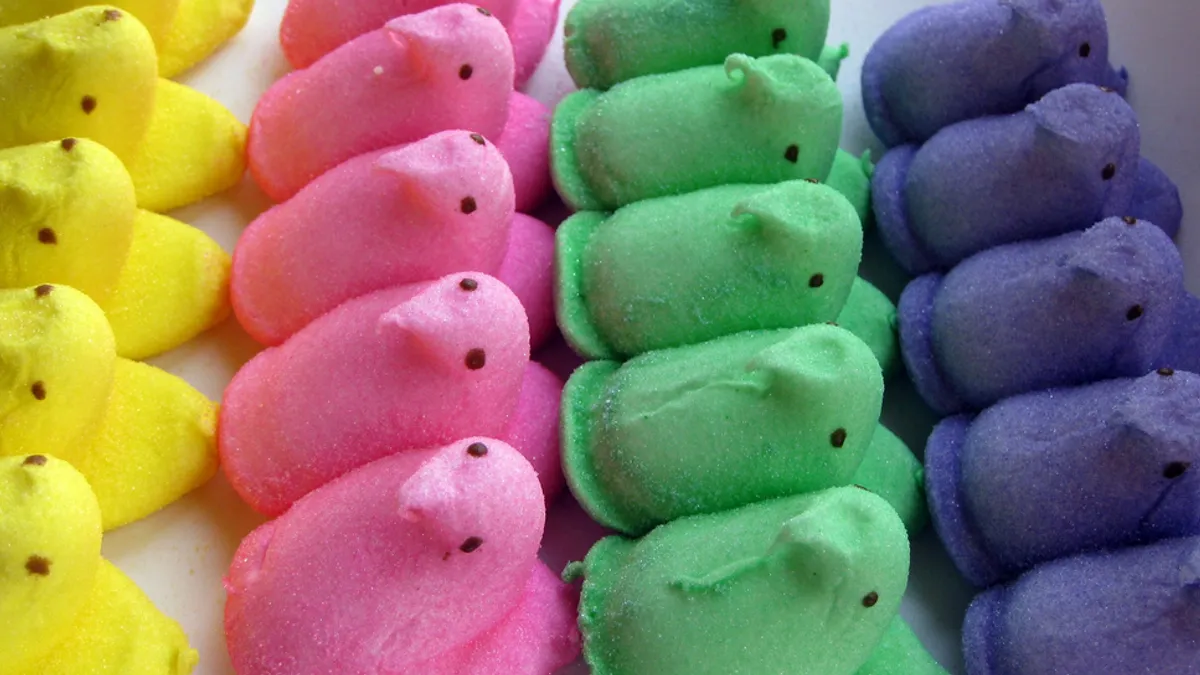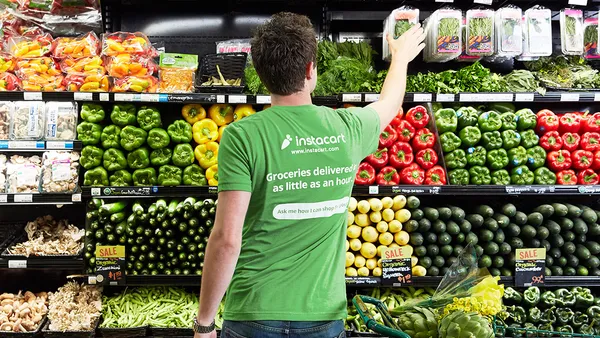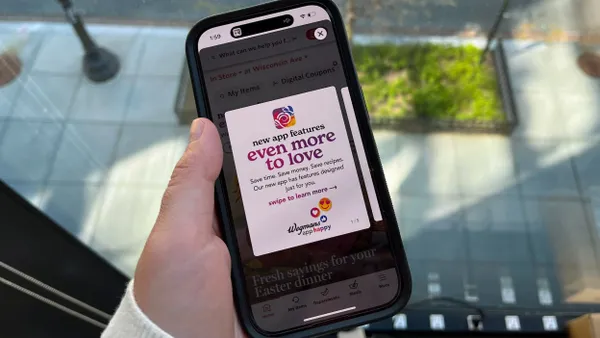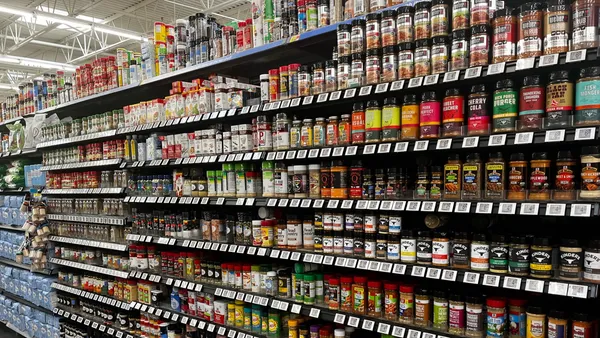Dive Brief:
- Consumers are set to spend about $18.11 billion on Easter goods, according to the National Retail Federation. This translates to about $151.25 per person, on average, which is a slight increase from $150.05 in 2018 but less than the record of $151.91 in 2017.
- Retail sales of Easter candy will claim $2.49 billion of that figure, which is a drop from $2.63 billion last year. About 87% of Easter shoppers are predicted to purchase candy.
- This Easter, shoppers will spend about $5.74 billion on food, $1.29 billion on flowers, $1 billion on decorations and $780 million on greeting cards.
Dive Insight:
Young adults are looking forward to Easter, with 85% of adults aged 18 to 34 planning to celebrate the holiday. About 37% of shoppers under 35 also plan to use their smartphones to support their Easter shopping, so retailers that have marketed the holiday using digital tools may be well-positioned to earn Easter dollars from a younger demographic.
A few retailers are already poised to capture digital-focused Easter shoppers, with 49% of retailers reporting that digital is a big focus for their in-store efforts. Wholesale club BJ's is offering a variety of Easter promotions through e-commerce, and Target has offered Easter sales on decor, candy and more both in-store and online. Millions of shoppers are already using Walmart’s grocery app, which features a full selection of Easter products.
With 54% of people planning to cook an Easter meal, shoppers are spending the bulk of their Easter dollars on food this year. Some grocers use promotions to get shoppers in the door, such as Giant's free Easter ham program, hoping to capture the bulk of shoppers' holiday food spend. Others, such as Whole Foods and Raley's prepare full Easter dinners that consumers can pick up and serve at home.
Despite claims that shoppers care more and more about their health, holidays — and Easter in particular — continue to drive candy sales year after year. Halloween candy drew $2.6 billion in sales in 2018, and Valentine's Day spending was up this year. About 65% of those who NRF surveyed said tradition inspired their Easter shopping, which could explain the ongoing commitment to holiday candy.
Outside of holidays, consumers are becoming less likely to make impulse snack purchases and are showing a greater interest in natural foods, limited ingredients and clean label items. This could explain why the figure has dropped some since last year.












